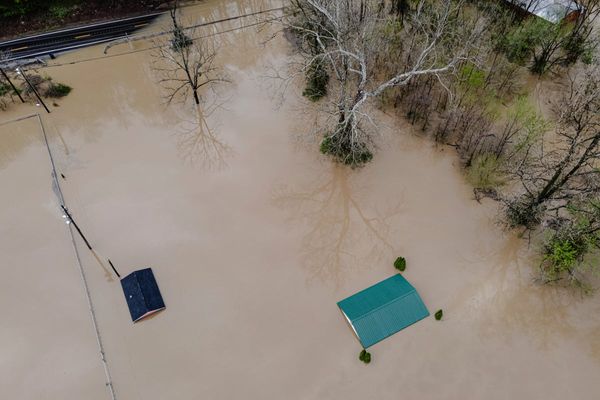EXPLAINER
The story so far: On February 18, 2022, India and the United Arab Emirates (UAE) inked a trade pact, Comprehensive Economic Partnership Agreement (CEPA) during a virtual summit led by Prime Minister Narendra Modi and Crown Prince of Abu Dhabi Sheikh Mohamed bin Zayed Al Nahyan. The agreement came after a fast tracked three month negotiation between the Indian and the UAE teams. India has been part of global trade organisations like the WTO but this latest trade pact is unique and has broader implications.
What is the India-UAE CEPA about?
The Comprehensive Economic Partnership Agreement is a bilateral trade pact that will cover over a period of time 90% of India’s exports said Commerce Secretary B.V.R. Subrahmanyan introducing the scope of the deal. This will include leather, processed agriculture and dairy products, handicrafts, gems and jewellery, furniture, pharmaceuticals, food and beverages, engineering products and nearly the entire spectrum of items produced by the Indian economy. Apart from the goods sector, it will also include the services sector. Indian officials said that they expect the services sector to boom by $15 billion in the coming five years.
Commerce and Industries Minister Piyush Goyal said that the deal has strong anti-dumping measures integrated into it which will prevent any country from dumping its products into the Indian market by using the route of the UAE. He also said that the document has very strong rules of origin clauses that will disallow any country to export goods to India taking advantage of relaxed tariff on the Indian side. An official source mentioned that India wants 40% value addition into a product from a third country before it could be exported to India through UAE.
How will the trade pact benefit India-UAE economic ties?
India-UAE economic ties are marked by the flow of remittances from the oil rich Gulf country to India. The country hosts at least 3 million Indians who work in diverse sectors of the economy of the Emirates and provides it with vital manpower support at all levels. According to a study, 82% of India’s total remittances originated from seven countries that included Gulf countries like the UAE, Saudi Arabia, Oman and Kuwait. In 2019, India received $83 billion from the Gulf region. The figure was marginally affected in 2020 when large number of Indian workers returned home because of pandemic related economic distress. The India-UAE economic relation at present is shaped by the remittances that remain much greater than the $60 billion bilateral trade. The remittances are expected to rise with full economic recovery of the UAE’s post-pandemic economy. Commerce Secretary Mr. Subrahmanyam said the FTA will also increase remittances as Indian investments in UAE will bring Indian employees into the Gulf country.
Why did PM Modi refer to the western Quad?
The western Quad consisting of Israel, India, UAE and the United States has been a regional factor ever since it was convened last October which was followed by a ministerial meeting of the four countries. The western quad is marked by the diplomatic breakthroughs between Israel and the United Arab Emirates which recently hosted Israeli Prime Minister Naftali Bennett. It is understood that UAE as part of its post pandemic recovery plans is planning to revitalise its trade links with the region from the Mediterranean coast to Turkey on one hand and India and South Asia on the other. USA and the UAE are among the biggest trading partners of India, and Israel is among the top technology support providers for India. All four are connected by currents of security and trade.
What will be the immediate outputs of the FTA?
The FTA will allow goods from UAE, especially the famed dates of UAE to enter India. Most of the Indian exports similarly will benefit from the “zero tariff” that UAE is expected to grant. This move will allow increased visibility of Indian products in the UAE. The reduction in tariff for Indian jewellery and gems will allow it to enter the UAE in greater volume.
How is the CEPA different from other such trade agreements India is negotiating with countries like Australia?
Most of the other agreements are expected to be “early harvest agreements” or interim agreements till both sides conclude the final agreement in a comprehensive manner. The India-UAE FTA however is comprehensive in nature, announced Piyush Goyal to highlight the vast scope of items that will come under it. Early harvest agreements are expected to include goods and products. But the CEPA will have a greater spread of both goods as well as services.
When will the agreement come into effect?
Though the signing of the agreement took place on February 18, it is not likely to come into force immediately as the United Arab Emirates has not yet completed the necessary official procedures on its end.
This process will take 60 days at least and India has expressed hope that CEPA will be in the phase of implementation after May 1.
India has completed the entire official requirements, Mr. Subrahmanyam has said.
- On February 18, 2022, India and the United Arab Emirates (UAE) inked a trade pact, Comprehensive Economic Partnership Agreement (CEPA) during a virtual summit led by Prime Minister Narendra Modi and Crown Prince of Abu Dhabi Sheikh Mohamed bin Zayed Al Nahyan
- The CEPA is a bilateral trade pact that will cover over a period of time 90% of India’s exports as well as services which is expected to boom by $15 billion in the coming five years. The deal also has strong anti-dumping measures and rules of origin clauses
- The India-UAE economic relation at present is shaped by remittances. The remittances are expected to rise with full economic recovery of the UAE’s post-pandemic economy







